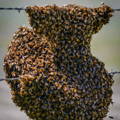
Unravelling the Mystery of Why Bees Swarm
Gain insights into the decision-making process and ecological significance of swarming, providing valuable knowledge for bee enthusiasts and nature lovers. Explore how swarming influences bee survival and genetic diversity. A must-read for beekeepers and those fascinated by the wonders of nature.
FUN FACT: Although honeybees can swarm at any time, Spring is the most common time of year.
Subscribe
To join our mailing list and never miss an update!
Bees, small but mighty creatures, have fascinated and intrigued humans for centuries. They are not only responsible for pollinating a significant portion of the world's crops but also have an intricate social structure within their colonies.
One of the most mesmerizing natural phenomena associated with bees is their tendency to swarm. But why do bees swarm? What drives thousands of bees to leave their hives and embark on a collective journey? Let's delve into the reasons behind this captivating behavior.
Swarming is essentially the process of reproduction for a honey bee colony. It most often occurs when a healthy and strong colony outgrows its current hive and needs to expand. A beehive consists of a single queen bee, thousands of worker bees, and a few male drones.
As a colony grows, it becomes essential to divide the population to prevent overcrowding. Swarming is the colony's mechanism to create new colonies and ensure genetic diversity.
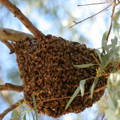
During swarming, a large group of worker bees, along with their queen, leave their original colony to form a new one. This process is triggered by various factors, such as an increase in population within the hive, congestion, or dwindling resources. The decision to swarm is made collectively by the bees through a complex process of communication and consensus.
Swarming serves multiple functions for the bees. Firstly, it allows for the formation of new colonies, ensuring the survival and expansion of the species. By creating multiple colonies, bees can diversify their genetic pool and increase their chances of adapting to changing environmental condition
Secondly, swarming helps to alleviate overcrowding within the hive. As the population grows, resources such as food and space become limited. By swarming, bees can avoid competition and resource depletion within their original colony, ensuring the survival of the remaining bees.
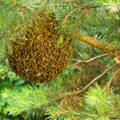
Additionally, swarming plays a crucial role in maintaining genetic diversity within bee populations. As the colony splits and new colonies are formed, there is a mixing of genetic material between different groups of bees.
This genetic mixing is essential for the long-term survival of the species, as it increases the overall resilience and adaptability to environmental changes.
Swarming also allows for the spread of beneficial traits throughout the bee population. If one colony has developed advantageous adaptations or resistance to certain diseases or pests, the swarming process enables these traits to be dispersed to other colonies, increasing the overall health and vitality of the population.
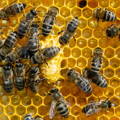
Furthermore, swarming has ecological implications beyond the realm of bees. When a swarm of bees is on the move, it attracts the attention of various animals, including birds, other insects, and humans. This interaction promotes cross-pollination, seed dispersal, and contributes to the overall biodiversity and health of the ecosystem.
The swarm begins with the decision of the colony to replace its queen. When the current queen's reproductive capabilities begin to diminish or the colony senses some other adverse condition, they start creating new queen cells to replace her. The development of these queen cells triggers the swarming process.
The old queen, sensing the upcoming competition from her daughters, prepares to leave the hive with a large group of worker bees. Before swarming, the worker bees gorge themselves on honey reserves to sustain them in the initial stages of establishing a new colony. This behavior prepares them for the uncertainties they might encounter during their journey.
Once the preparations are complete, the swarm takes off in search of a new home. The sight of a swirling cloud of bees can be awe-inspiring, as it forms a living, buzzing mass of activity. However, contrary to popular belief, swarming bees are generally not aggressive, as their main focus is on finding a new home rather than defending themselves.
Several factors determine where the swarm will choose to establish their new colony. The scout bees within the swarm are responsible for finding a suitable location, which can be in a hollow tree, an abandoned hive, or even a building cavity. These scout bees explore potential sites and return to the swarm with their findings.
Trending Articles
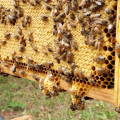
The entire swarm then engages in a democratic decision-making process known as the "bee dance," where each scout bee performs a unique dance to communicate the quality and location of its discovered site. Ultimately, the colony reaches a consensus and flies en masse to the chosen location, where a new hive will be formed.
Beyond the need for expansion, swarming serves various ecological and evolutionary purposes. It plays a crucial role in the health and survival of bee populations by mitigating the risks associated with disease, pests, and parasites.
Swarming allows the colony to leave behind any issues or threats it might have faced in the original hive, such as the accumulation of pests or contaminated wax. In addition, swarming ensures that the colony's genetic diversity remains high, enhancing their resilience to environmental changes and improving their chances of survival.
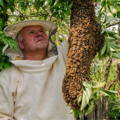
Swarming is a natural process that demonstrates the extraordinary collective behavior of bees. It is a spectacle that showcases the adaptability and intelligence ingrained in these remarkable creatures. Understanding the reasons behind swarming not only helps beekeepers manage their hives better but also provides valuable insights into the functioning of our ecosystems.
Trending Products
Copyright©2023 All rights reserved. We love to have you share our article as long as you include a direct link to this page. Please contact us for permission and we’ll be happy to collaborate. This article or any portion thereof , including all images, may not be reproduced or used in any manner whatsoever without the express written permission of Gypsy Shoals Farm.



